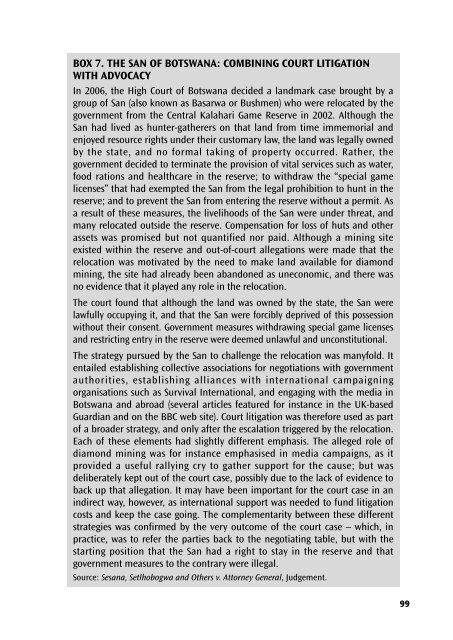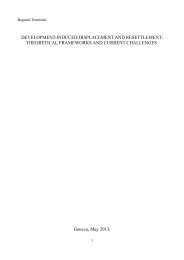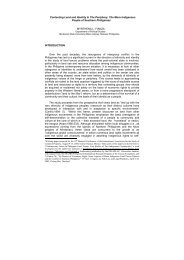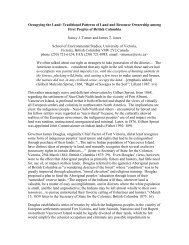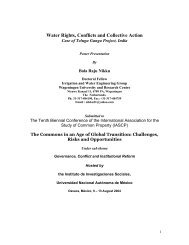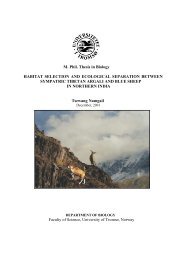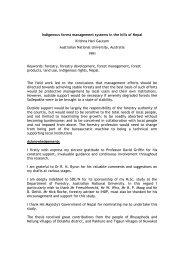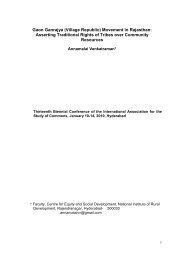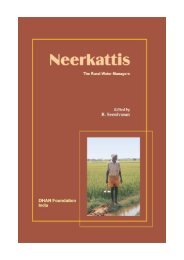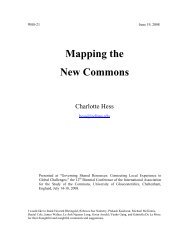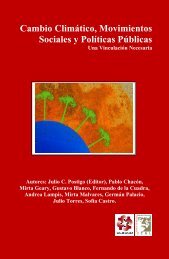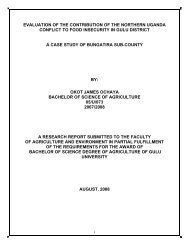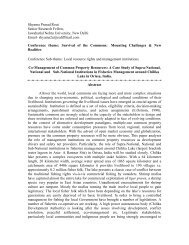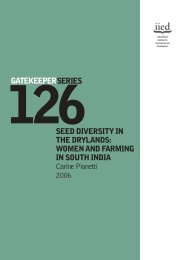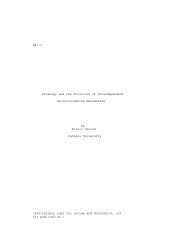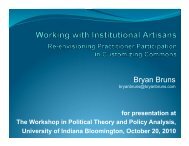Legal empowerment for local resource control
Legal empowerment for local resource control
Legal empowerment for local resource control
Create successful ePaper yourself
Turn your PDF publications into a flip-book with our unique Google optimized e-Paper software.
BOX 7. THE SAN OF BOTSWANA: COMBINING COURT LITIGATION<br />
WITH ADVOCACY<br />
In 2006, the High Court of Botswana decided a landmark case brought by a<br />
group of San (also known as Basarwa or Bushmen) who were relocated by the<br />
government from the Central Kalahari Game Reserve in 2002. Although the<br />
San had lived as hunter-gatherers on that land from time immemorial and<br />
enjoyed <strong>resource</strong> rights under their customary law, the land was legally owned<br />
by the state, and no <strong>for</strong>mal taking of property occurred. Rather, the<br />
government decided to terminate the provision of vital services such as water,<br />
food rations and healthcare in the reserve; to withdraw the “special game<br />
licenses” that had exempted the San from the legal prohibition to hunt in the<br />
reserve; and to prevent the San from entering the reserve without a permit. As<br />
a result of these measures, the livelihoods of the San were under threat, and<br />
many relocated outside the reserve. Compensation <strong>for</strong> loss of huts and other<br />
assets was promised but not quantified nor paid. Although a mining site<br />
existed within the reserve and out-of-court allegations were made that the<br />
relocation was motivated by the need to make land available <strong>for</strong> diamond<br />
mining, the site had already been abandoned as uneconomic, and there was<br />
no evidence that it played any role in the relocation.<br />
The court found that although the land was owned by the state, the San were<br />
lawfully occupying it, and that the San were <strong>for</strong>cibly deprived of this possession<br />
without their consent. Government measures withdrawing special game licenses<br />
and restricting entry in the reserve were deemed unlawful and unconstitutional.<br />
The strategy pursued by the San to challenge the relocation was manyfold. It<br />
entailed establishing collective associations <strong>for</strong> negotiations with government<br />
authorities, establishing alliances with international campaigning<br />
organisations such as Survival International, and engaging with the media in<br />
Botswana and abroad (several articles featured <strong>for</strong> instance in the UK-based<br />
Guardian and on the BBC web site). Court litigation was there<strong>for</strong>e used as part<br />
of a broader strategy, and only after the escalation triggered by the relocation.<br />
Each of these elements had slightly different emphasis. The alleged role of<br />
diamond mining was <strong>for</strong> instance emphasised in media campaigns, as it<br />
provided a useful rallying cry to gather support <strong>for</strong> the cause; but was<br />
deliberately kept out of the court case, possibly due to the lack of evidence to<br />
back up that allegation. It may have been important <strong>for</strong> the court case in an<br />
indirect way, however, as international support was needed to fund litigation<br />
costs and keep the case going. The complementarity between these different<br />
strategies was confirmed by the very outcome of the court case – which, in<br />
practice, was to refer the parties back to the negotiating table, but with the<br />
starting position that the San had a right to stay in the reserve and that<br />
government measures to the contrary were illegal.<br />
Source: Sesana, Setlhobogwa and Others v. Attorney General, Judgement.<br />
99


